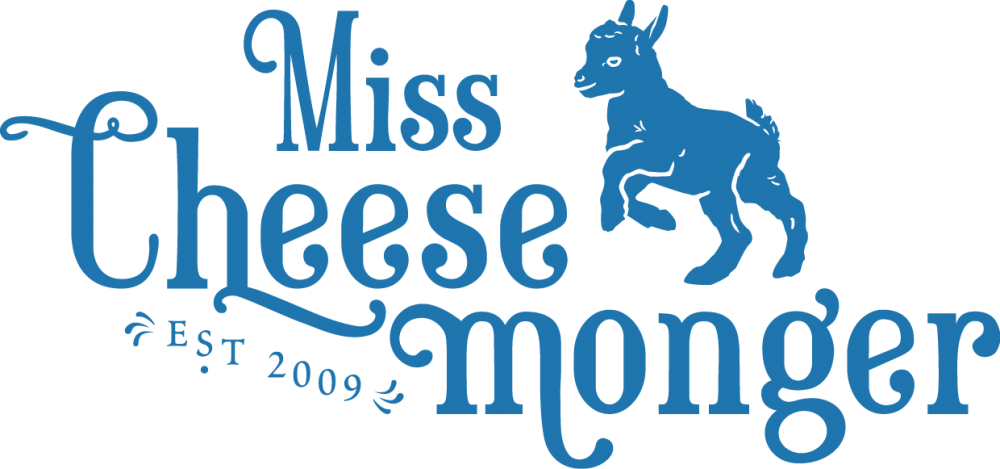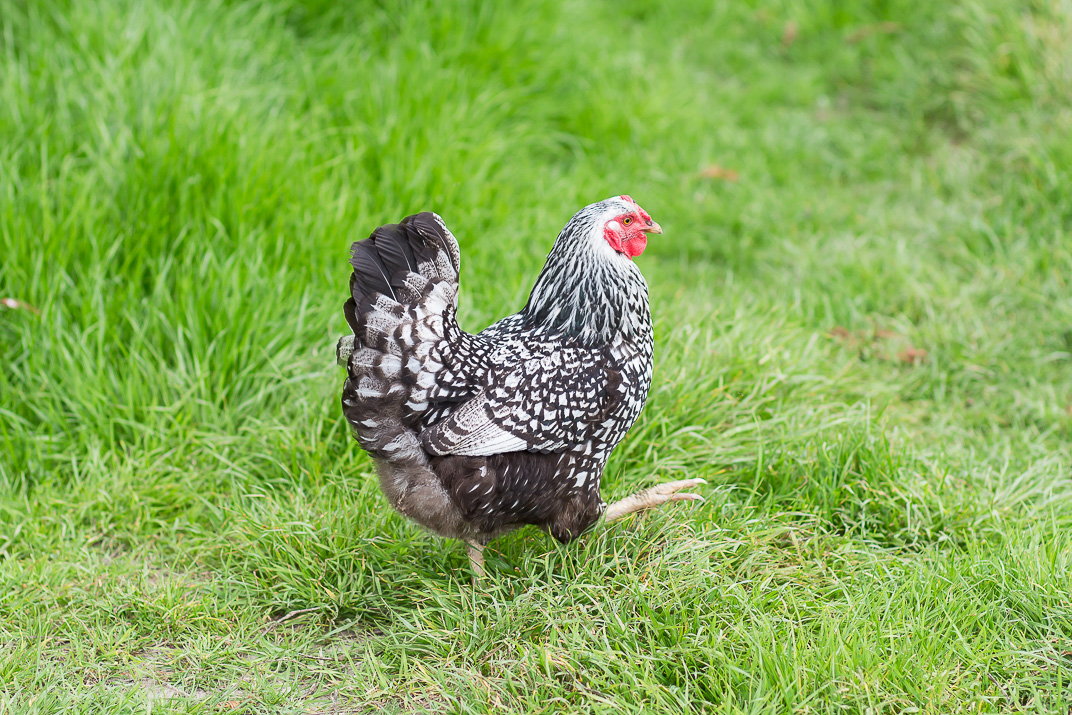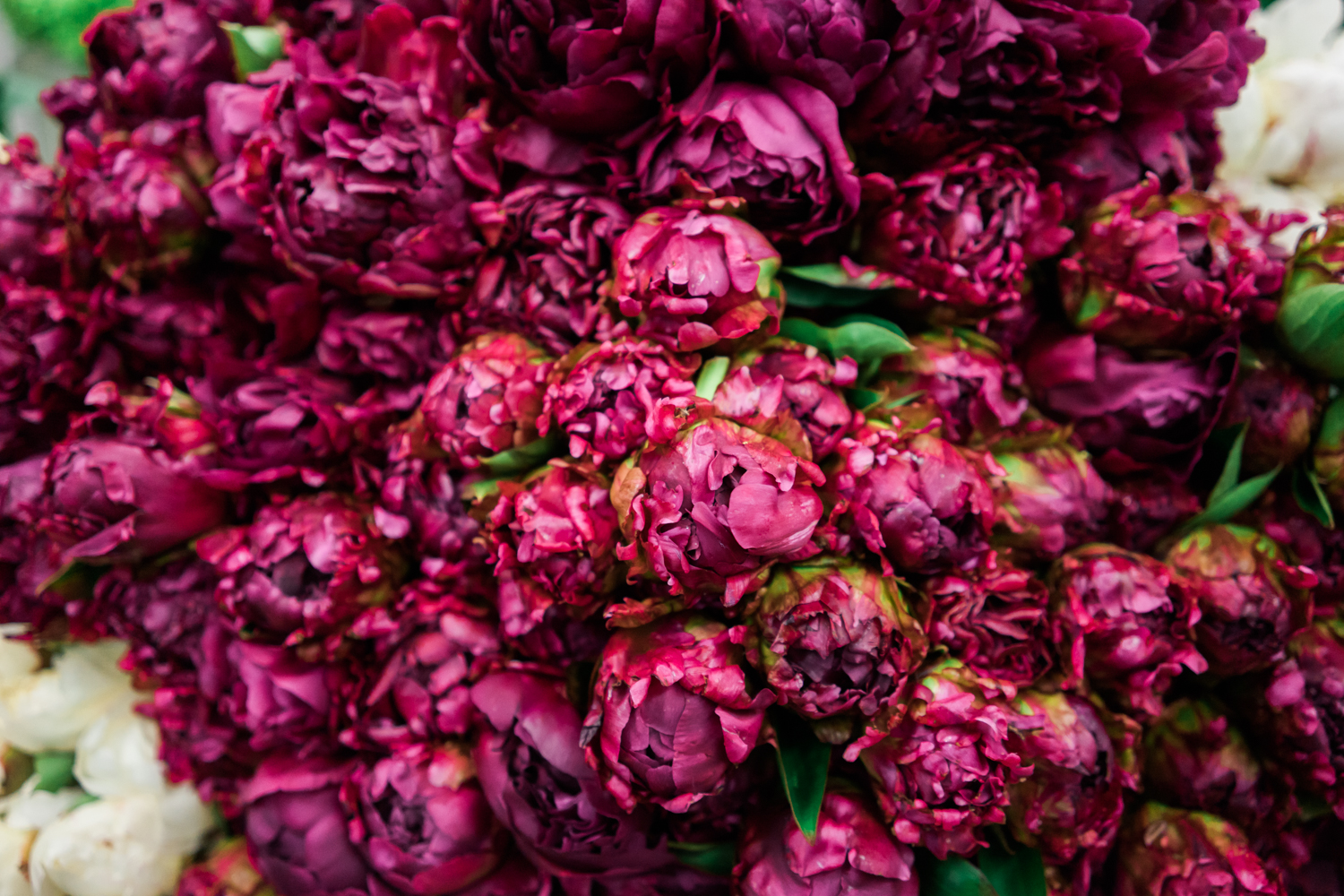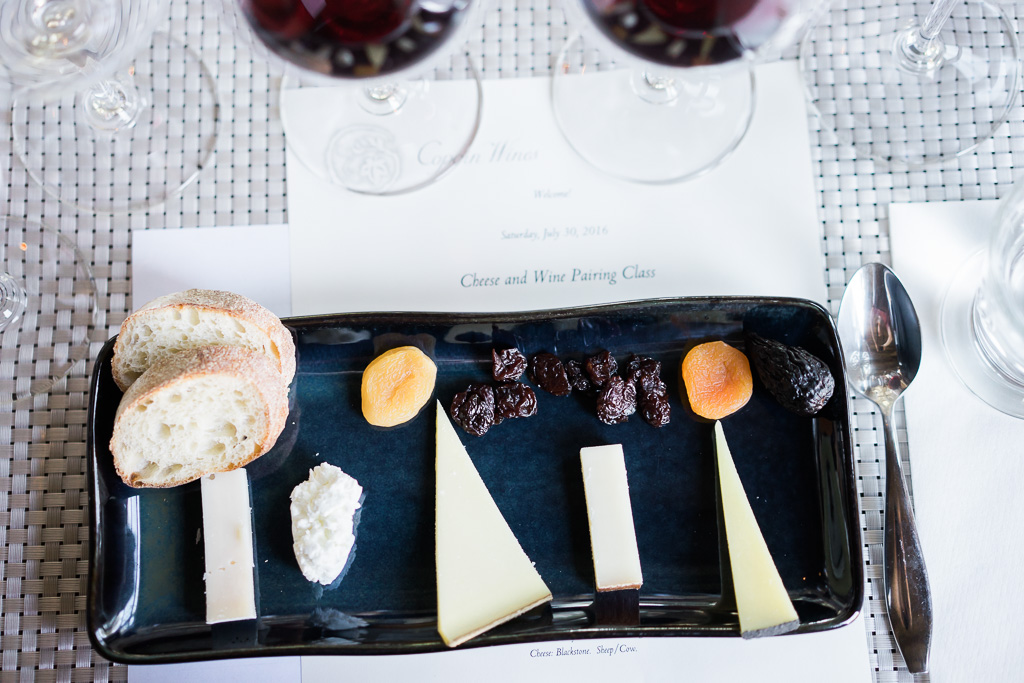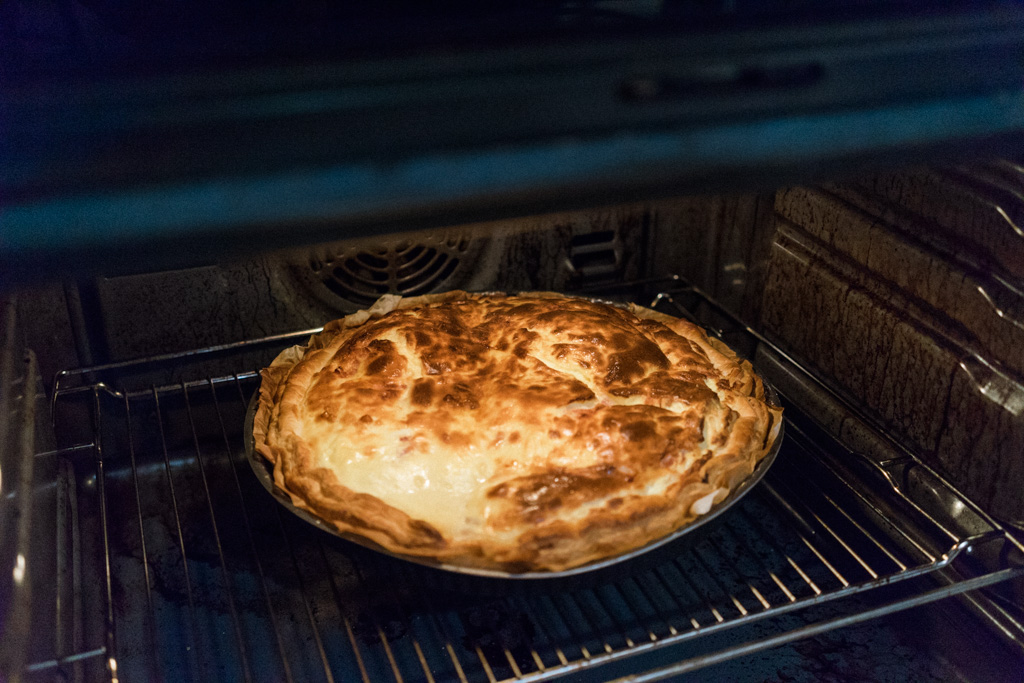Happy Star Wars Day, everyone!! I’ve been drooling over the Annie Liebovitz photos for Vanity Fair on the Star Wars set . . . . anyway. But what I’ve been drooling over AND eating is Queso Fresco, which Milk Maid and Kitchen Creamery author Louella Hill came over to make with me last week! We were joined by our mutual friend, artist, and home cheesemaker Stephanie. I’ve shared the recipe below!
A lot of San Francisco area folks are familiar with the Milk Maid’s cheesemaking classes. Now, she has written and illustrated, with stunning prowess, a book of recipes for home cheese makers. It’s gorgeous, really. I cannot express that enough. The photography is so appetizing, and the writing and recipes are so clear. Then there are those beautifully inked illustrations. Ahhhh, believe me, you’re going to want to check out this book!
After Louella, Stephanie, and I had finished our cheese making, Louella shared with me her top 3 tips for those of you who want to make cheese at home, but might be too intimidated to try. See it here!
Queso Fresco
Makes about 1.5-2 lbs (680-910 grams)
Ingredients
2 gal/7.5L unhomogenized milk (we used Jersey cow’s milk from St. Benoît)
2 Tbsp buttermilk
½ tsp CaCl2 (Calcium Chloride) diluted in ¼ cup/60 ml water
½ tsp rennet diluted in¼ cup/60 ml water
2-3 Tbsp salt
3 jalapeno peppers (optional)
Special equipment
Medium or fine (#60 or #90) cheesecloth or medium cheese form
Process
- Clean all work surfaces and equipment before beginning. Rise the cheesecloth with hot water and wring it out. Line a large colander with the cheesecloth and place it in the sink.
- Pour the milk into a heavy-bottomed stockpot, and warm over medium heat to 90°F/32°C, stirring occasionally with an up-and-down motion. When the temperature reaches 90°F/32°C, remove the pot from heat. You will still be able to touch the pot, and feel that it is warm, not hot.
- Start roasting your peppers! We roasted them directly on my electric stove, but you can also roast them by turning them over a gas stove as well.
- Stir in the buttermilk. Cover the pot and let the milk ripen for 10 minutes.
- Stir in the CaCl2 solution, then the rennet solution, stirring for 20 seconds after adding each ingredient.
- Cover the pot, and let the rennet set for 30 minutes. After 30 minutes, check for a clean break (see the images below). If it is not yet at that point, let the milk sit for 10-15 more minutes.
- Cut the curd into hazelnut-sized pieces (about ¾ in./2 cm.) To do this, use a long curd knife to cut the curd into a 2cm grid, then a skimmer to cut that grid horizontally.
- Let the curds heal (sit) for 2 minutes, then start stirring the pot gently with a top-to bottom motion. Keep the curds as intact as you can. When the curds are all in motion, put the pot on low heat. Stir and cook the curds for 20 minutes as you bring the temperature of the pot up to 95°F/35°C.
- When the temperature reaches 90°F/32°C, remove the pot from heat again. Pitch the curds (let them settle to the bottom of the pot). Pour the whey form the top of the pot (some people save the whey for other projects! It’s up to you!), then pour the curds into the prepared colander. Let the curds drain in the colander for 1 minute, then return the curds to the pot.
- Add the salt to the curds, 1 Tbsp at a time. After each addition, with clean hands, toss the curds in the pot to mix the salt, and to squeeze the curds through tightened fists (called hand-milling). Continue adding salt and milling until the curds are salted the way you like them, and they have the right, fluffy consistency.
- Cover the pot to try and retain its heat for 20 minutes more. This ripening period lets the salt soak in, and allows for more whey to be released from those curds. At this point, we added diced, roasted jalapeno peppers.
- Transfer the curds back to the cheesecloth-lined colander (or a cheese form with follower). Gather the ends of the cloth, and twist out to wring out more whey. Knot the ends of the cloth to form a pouch OR pack them into prepared cheese forms. If you’re using a cheese form like we did, use your fingers to pack it into place. Flip the cheese within the first 5 minutes, then return the cheese to the form. Wrap the wheel tightly, and store it in the fridge for up to 1 week.
- Firmer cheese: If you’d like a slightly firmer cheese, you can press the pouch of curd lightly for 10 minutes (about 10 lb/4.5kg), then open the cheesecloth, and flip the cheese over. Press the cheese again with about 20 lb/9 kg pressure for about 30 additional minutes. The longer you press, the more dry and firm your cheese will become. When Louella came over to my kitchen, we did not do this, and it was just fine!
Enjoy your cheese! I LOVED how sweet this cheese was, and the peppers just added a bright, lively dimension. We could have served this with cilantro and some lime, but our bellies were impatient.
Thank you, Louella, for sharing your recipe and cheesemaking expertise with us, and thank you, Stephanie, for coming to make queso fresco with us!!
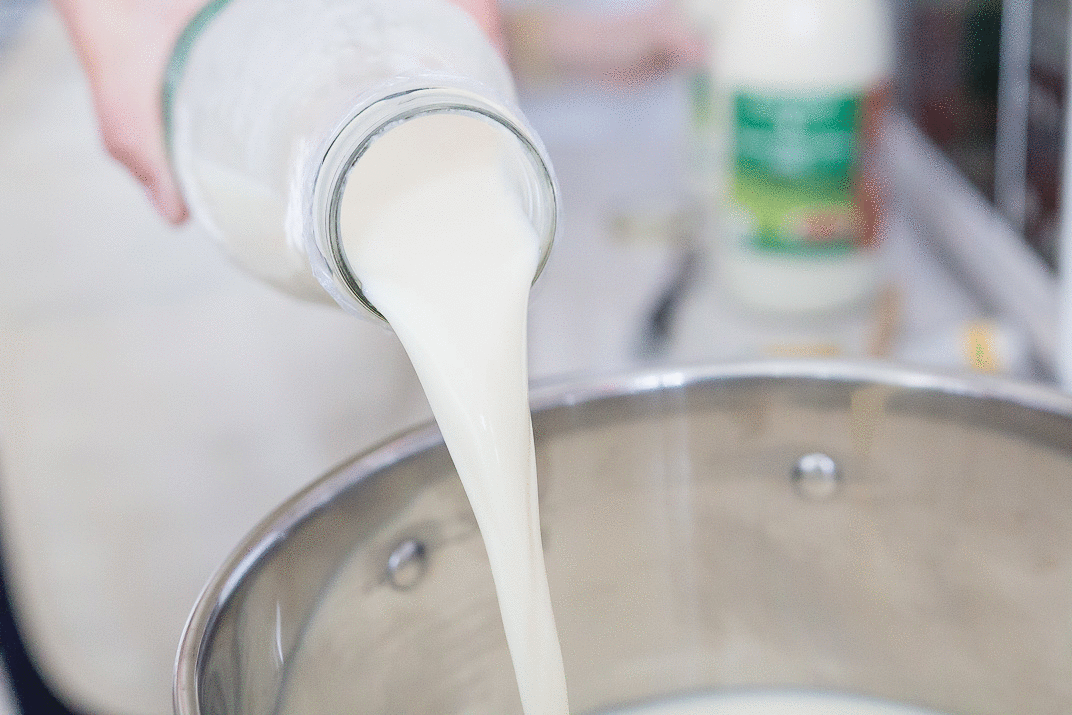


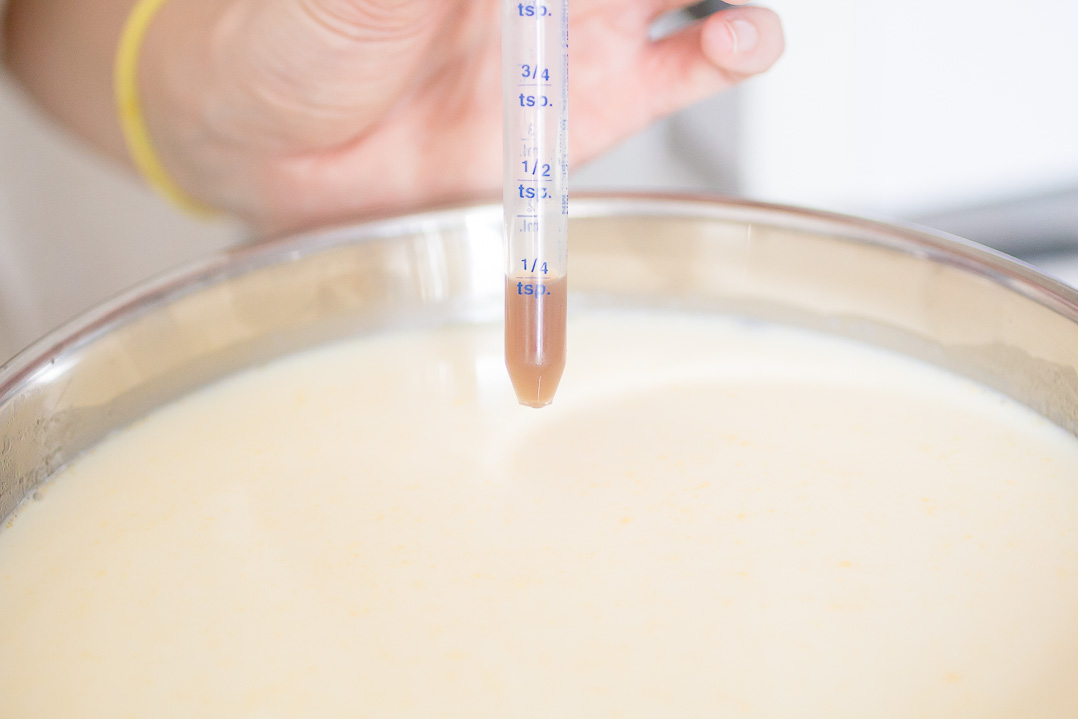








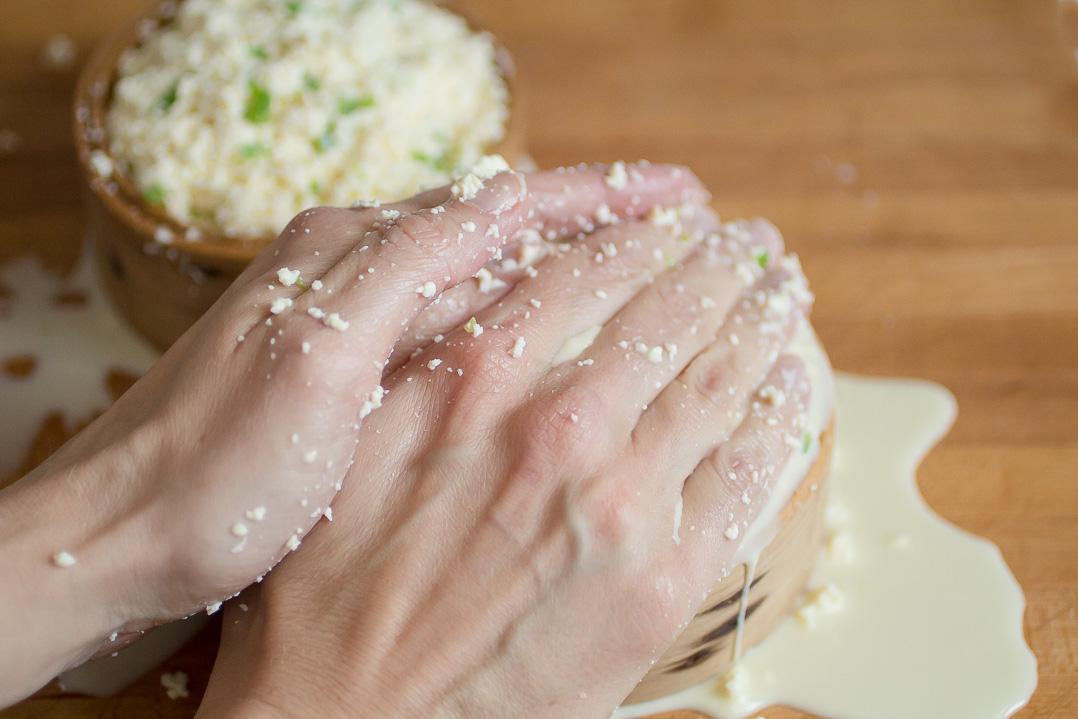
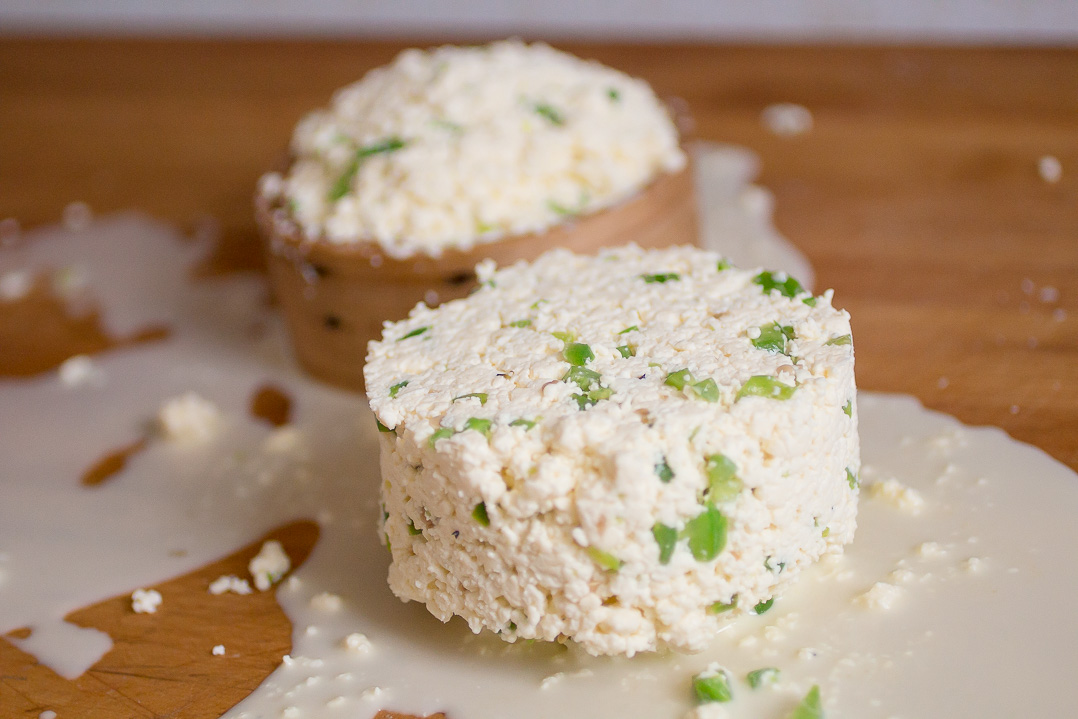


Follow me on Instagram, Facebook, Pinterest, Twitter, & my mailing list!
Support Miss Cheesemonger by shopping on Amazon! Then get your beef jerky fix at Uncle Andy’s Jerky!
